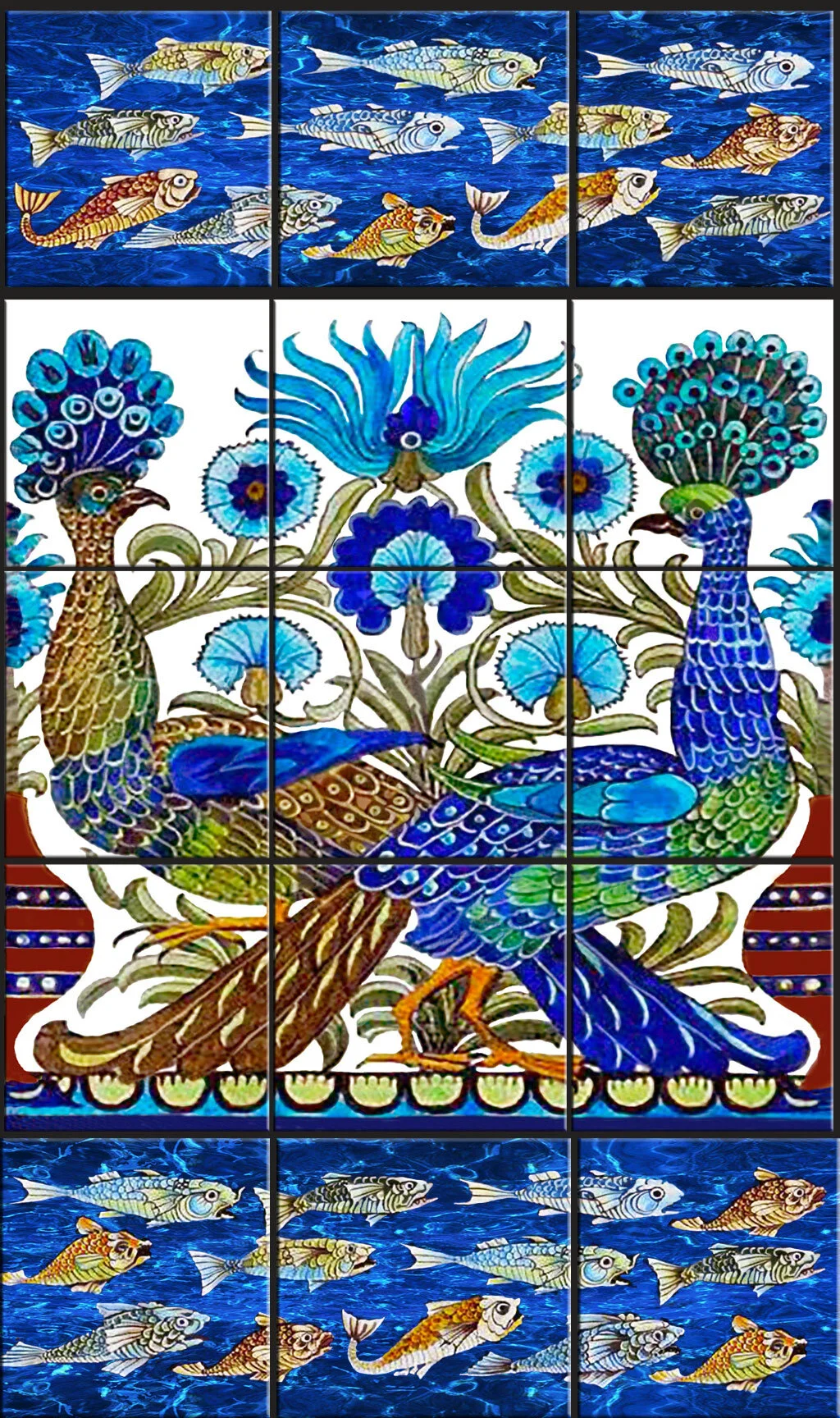The Day-dream, 1880 by Dante Gabriel Rossetti, Victoria and Albert Museum, London.
The model in this piece, Jane Morris is the wife of William Morris and it is a widely held belief that Rossetti and Jane carried on an affair.
Your Custom Text Here

The Day-dream, 1880 by Dante Gabriel Rossetti, Victoria and Albert Museum, London.
The model in this piece, Jane Morris is the wife of William Morris and it is a widely held belief that Rossetti and Jane carried on an affair.

La Belle Iseult, 1858 by William Morris, The Tate Modern, London.
The model for this work is Jane Burden who later became the wife of William Morris and lived with him at Red House. Note his emphasis on the design and detail in the room, he later gave up painting in favor of interior design and was very successful with Morris & Co.

Peacock Tile Panel by William De Morgan, Formally The Peacock House now run by the Richmond Fellowship, London.
William De Morgan became involved with the Pre-Raphaelite movement through William Morris. Morris, Burne-Jones and others were interested in medieval decoration for their homes and De Morgan's tiles were the perfect addition.

The Strawberry Thief by Morris & Co., 1883 drawn by Philip Webb.
As William Morris and his family tried to grow strawberries at their home, Kelmscott, thrushes would climb under the barriers they erected and steal the strawberries.

Red Hous, 1859 owned by William Morris, architect Philip Webb. Decorated by Morris & Co., National Trust, Bexleyheath, England.
A departure from the traditional Victorian style because it was open and full of light. Morris reaction to the industrial movement motivated him to hire artists and craftspersons to decorate the home and lead to the beginning of the arts and crafts movement.Interiors

Peacock tiles by William De Morgan and Co., c. 1888-97, The Fitzwilliam Museum, University of Cambridge, UK.
William De Morgan was closely associated with William Morris the British Arts and Crafts movement, like Morris, De Morgan believed that looking to the skilled crafts of the past would greater enrich the lives of the people of Victorian Britain, as the hand-made work was both fulfilling and beautiful. His work was influenced by the ornate and colorful ceramics of the Middle East.